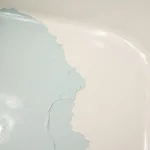Car paint bubbling and peeling is a frustrating issue that can detract from your vehicle’s appearance and potentially indicate underlying problems. Understanding the causes, prevention, and repair options for this common paint defect is crucial for maintaining your car’s value and aesthetic appeal. This guide delves into everything you need to know about car paint bubbling and peeling repair. Learn how to identify the root cause, explore DIY solutions, and when it’s best to seek professional help. Let’s dive in.
Understanding Car Paint Bubbling and Peeling
Car paint bubbling and peeling occur when the paint film loses adhesion to the underlying surface. This can manifest as small blisters, larger bubbles, or widespread peeling. Identifying the specific type of damage is the first step towards effective car paint bubbling and peeling repair. For instance, if the damage is primarily on your hood, understanding the costs associated can be helpful – check out our guide on paint bubbling on car hood repair cost.
Several factors contribute to this problem, ranging from environmental factors to improper paint application:
- Moisture: Trapped moisture is a primary culprit. Water can seep under the paint through small chips or cracks, causing the paint to lift and bubble. This is especially prevalent in humid climates.
- UV damage: Prolonged exposure to sunlight can degrade the paint’s chemical composition, making it brittle and prone to peeling. See our guide on sun damage car paint repair for more information.
- Poor surface preparation: If the surface wasn’t properly cleaned and primed before painting, the paint won’t adhere correctly, leading to bubbling and peeling over time.
- Low-quality paint: Using inferior paint or incorrect paint application techniques can also result in adhesion issues.
- Impact damage: Stone chips and other impacts can create entry points for moisture, initiating the bubbling process. If you’re looking for advice on repairing minor paint chips, our Reddit repair car paint chip guide might be helpful.
DIY Car Paint Bubbling and Peeling Repair
For minor bubbling and peeling, you can attempt DIY repairs. This involves carefully removing the loose paint, sanding the affected area, priming, and repainting. It’s essential to follow the proper steps to achieve a satisfactory result. Check out our guide on how to repair paint bubbles on car for a step-by-step tutorial.
- Remove loose paint: Gently scrape away any loose or bubbling paint using a plastic scraper.
- Sand the area: Smooth the surface with fine-grit sandpaper to create a good base for the new paint.
- Prime: Apply a thin, even coat of automotive primer to promote adhesion.
- Repaint: Apply several thin coats of matching automotive paint, allowing each coat to dry thoroughly.
- Clear coat (optional): Apply a clear coat for added protection and shine.
When to Consult a Professional
While DIY repairs can be effective for small areas, more extensive damage often requires professional intervention. Professionals have the expertise and equipment to achieve a flawless finish and address any underlying issues, like rust. If you are in Abu Dhabi and require professional car paint repair, consider looking at our guide on car body paint repair Abu Dhabi.
- Extensive bubbling and peeling: If a large area is affected, professional repair is recommended.
- Rust formation: Rust requires specialized treatment to prevent further damage.
- Difficulty matching paint color: Professionals can accurately match the paint color for a seamless repair.
Preventing Car Paint Bubbling and Peeling
Prevention is always better than cure. Taking proactive measures can significantly reduce the risk of car paint bubbling and peeling:
- Regular washing and waxing: Keeping your car clean removes contaminants that can damage the paint. Waxing provides a protective layer against UV rays and moisture.
- Promptly repair chips and scratches: Addressing minor damage prevents moisture from seeping under the paint.
- Park in shaded areas: Minimizing sun exposure helps protect the paint from UV damage.
- Use high-quality car covers: Car covers provide an extra layer of protection against the elements.
Conclusion
Car paint bubbling and peeling can be a nuisance, but understanding the causes and taking appropriate action can help you maintain your car’s appearance and value. By following the tips in this guide, you can effectively address existing damage and prevent future occurrences of car paint bubbling and peeling.
FAQ
- What causes car paint to bubble near the wheel well? Road salt and debris can chip the paint, allowing moisture to penetrate and cause bubbling.
- Can clear coat prevent paint bubbling? While a clear coat adds protection, it’s not a foolproof solution. Proper paint application and surface preparation are essential.
- How much does professional car paint bubbling repair cost? The cost varies depending on the extent of the damage and the location.
- Is it necessary to prime before repainting a small area? Yes, priming is crucial for proper paint adhesion.
- How can I prevent paint bubbling in humid climates? Regular washing, waxing, and prompt chip repair are essential in humid environments.
- Can I use touch-up paint for bubbling? Touch-up paint is generally not suitable for bubbling as it won’t adhere properly to the lifted paint.
- Does insurance cover car paint bubbling repair? Coverage depends on your insurance policy and the cause of the damage.
Other potential questions and related articles within CarRepairOnline:
- How to identify different types of car paint damage?
- What are the best car paint protection products?
- DIY vs. professional car paint repair: Which is right for you?
- How to choose the right paint for your car?
Need help with car repairs? Contact us via WhatsApp: +1(641)206-8880 or Email: [email protected]. Our 24/7 customer service team is ready to assist you.

